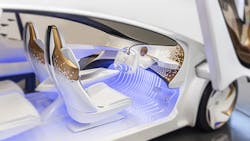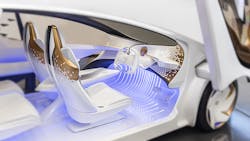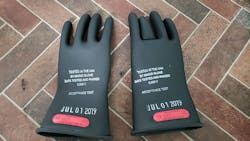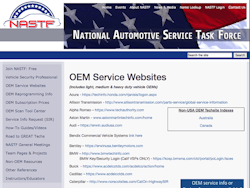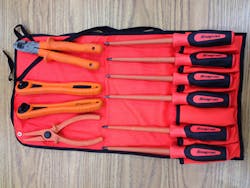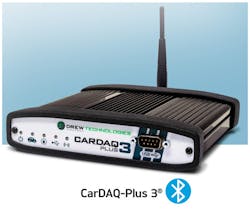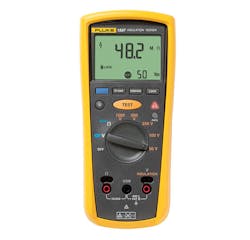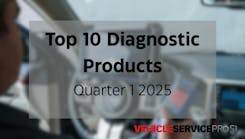In case you haven’t noticed, the future of automobiles — particularly a future of electric vehicles, has been a hot topic of discussion lately. Whether it’s here in the pages of Motor Age or in the national news connected to a political effort to lower greenhouse gas emissions, the energy behind transitioning from fossil-fuel internal combustion engines to advanced technology HEV and EV technologies can be felt profoundly. The effects of this technological advance are already beginning to be felt across new car dealerships and independent repair facilities. While dealerships have a manufacturer supported infrastructure to assist in complex repairs, the same cannot be said for the independent service sector. In order to stay ahead of this trend, shops will have to create a plan to address the service, training, tooling and diagnostic considerations for EV vehicle repair.
Service considerations
As the independent service sector begins to plan for EV service there is often a series of questions that the business owner is seeking the answers to: What are the differences between service of an EV vehicle and that of its internal combustion engine counterpart? What do I need to do to prepare for this technology? Are my employees equipped to do the required work safely? Does my shop need any special electrical infrastructure to repair charging equipment?ICE to EV — Beginning with the obvious, the main consideration is that the ICE has been replaced with an electric motor, a large, high-voltage battery with new chemistry from the lead-acid technology we are used to and a control unit that coordinates the handoff between power to the wheels and regeneration back to the battery. This handoff is very similar to that of the relationship that exists on production hybrid electric vehicles. While these systems have their own unique considerations, they are typically not service considerations until something major like a battery or other related component fails. Besides these high-ticket items, these vehicles still have many of the systems we are used to servicing. One area to consider is that of cabin noise. Without the noise of the internal combustion engine, small noises from the brake system such as those associated with brake pads and calipers, can become a customer complaint. Other noises such as those created by wind or vibration can be a concern. If you are not already familiar with analyzing noise, vibration and harshness, now may be a good time to perform some due diligence and get some training.
Safety – Safety has to be a priority in any shop setting, especially when working with high voltage HEV and EV systems and components. If you have already taken the time to establish good hybrid electric vehicle service practices in your shop, you may already be prepared for EV safety.
Keep in mind that many of the voltages you will be dealing with will have the capacity to severely injure or even kill a technician. However, most manufacturers have gone to great lengths to install safety mechanisms such as high voltage isolation, service disconnects and contactors to prevent the presence of high voltage when servicing these systems. Basically, if you follow the common sense approach of reading before proceeding then you will almost always be safe. Personal protective equipment such as high voltage lineman’s gloves and insulated tools will become a necessary step to maintaining personal safety in the shop. Shops will also need to invest in various devices such as safety cones to quarantine an area of a shop and notify other employees and customers of safety concerns while performing high voltage repairs.For quite a long time, tech support has been limited to the dealership but recently companies such as Autologic have emerged in the tech support arena and provided a model for the future. In November, Autologic’s parent company OPUS announced the establishment of Opus Intelligent Vehicle Support (IVS) which merged several well-known organizations in Drew Technologies, Autologic Diagnostics, Farsight and Bluelink Diagnostic Solutions to bring a powerhouse of knowledge and support to the aftermarket. OPUS IVS will offer expert guidance from OEM-trained master level technicians leveraging a combination of factory and proprietary software and hardware platforms to provide a much-needed infusion of support in an arena where it has been virtually non-existent. This service is subscription based and designed to support the end-user in even the most complex of repairs. It’s not hard to imagine other organizations following Opus’ lead in this arena.
Diagnostics
Diagnostics are typically at the heart of any repair. With that being said, shops should have access to factory level scan tools whenever possible. While this might seem daunting to some, access to this tooling has become much easier over the years. A visit to the National Automotive Task Force website is a great starting point: www.nastf.org. NASTF provides a database of OEM service subscription websites and associated costs. Each manufacturer provides a framework of daily, monthly and yearly OEM software subscriptions allowing independent shops to download and utilize and in many cases is identical to factory level diagnostics and programming.While some may argue that you can perform diagnostics with an aftermarket tool, I would point out the August 2019 Motor Age article on Toyota Vehicle Control History. This technology provides the tool user with information that can be essential to diagnosing complex vehicle complaints and highlights the necessity of factory scan tools for certain repairs. As always, as independent technicians we find a way. The way just may be easier with the right tooling and info.
Tooling
PC-based labscopes – While this is not a specific hybrid/EV tool the labscope can be of great use in HV and EV repair. With several HV additions, this tool can provide a wealth of information. Differential probes, available through companies such aeswave.com, provide the ability to view live measurements from any pair of windings on a 3-phase system. Just keep in mind that if you want to view all three phases simultaneously, you will need three differential probes in order to do so. These cost approximately $375 each.
